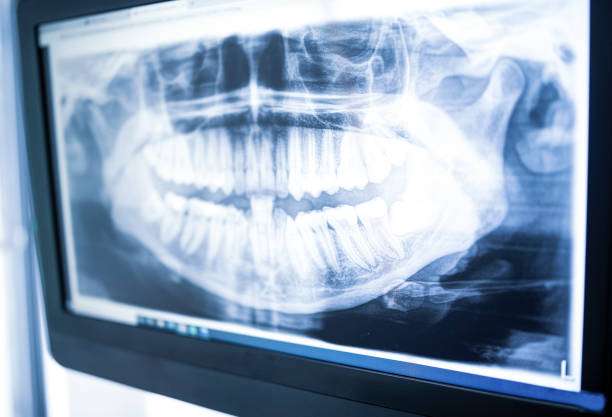
Digital X-ray
Dental X-rays are an important part of dental diagnostics and treatment planning. Here is some information about it:
Purpose: Dental X-rays are used to visualize structures in the mouth and jaw area that are not visible to the naked eye. These include teeth, jawbones, tooth roots and surrounding tissue. X-rays allow dentists to detect problems such as tooth decay, gum disease, jawbone loss, misaligned teeth, cysts or tumors.
Types of x-rays: There are different types of dental x-rays, including:
- Panoramic X-rays: a large, clear image of the entire jaw that shows structures such as teeth, jawbones, maxillary sinuses and temporomandibular joints.
- Periapical X-rays: Show a single tooth segment from the crown to the tip of the root.
- X-rays for occlusion: Show the teeth in occlusion to assess the relationship between the upper and lower jaw.
- Tomography (CT or CBCT scan): Three-dimensional x-rays that provide detailed information about bone structure and soft tissue.
Safety: Modern dental X-ray machines use low doses of radiation to minimize the risk to the patient. In addition, lead-free protective aprons and collars are used to reduce radiation exposure to the rest of the body.
Frequency: The frequency of dental x-rays depends on the patient’s individual needs and the state of their oral health. For new patients, x-rays are often taken to assess the current condition of the dentition. Therefor, x-rays are repeated as needed and as treatment is planned.
Benefits: Dental x-rays allow dentists to make accurate diagnoses, plan treatments and monitor treatment progress. They are an indispensable tool for maintaining oral health and can help to detect and treat dental problems at an early stage.
Arrange your appointment now!
069 – 95 90 93 19
We use digital X-rays in our practice.
Digital X-ray
Digital radiography is a modern technology that is widely used in dentistry. Unlike traditional x-rays, digital radiography uses digital sensors to create images of the teeth, jaw and surrounding tissues. These images are instantly displayed on a computer screen, making the process faster and more efficient.
Digital radiography offers several advantages over conventional x-ray procedures, including reduced radiation exposure for the patient, as less radiation is needed to produce high-quality images. In addition, digital technology allows for easy storage and transfer of images.
Another advantage is the possibility of image enhancement through digital manipulation to view details more closely and improve diagnostic accuracy. In addition, digital X-ray images are more environmentally friendly as no chemical development processes are required.
Overall, digital x-rays offer an advanced and efficient method of imaging in dentistry, helping to make accurate diagnoses and improve treatment quality.
